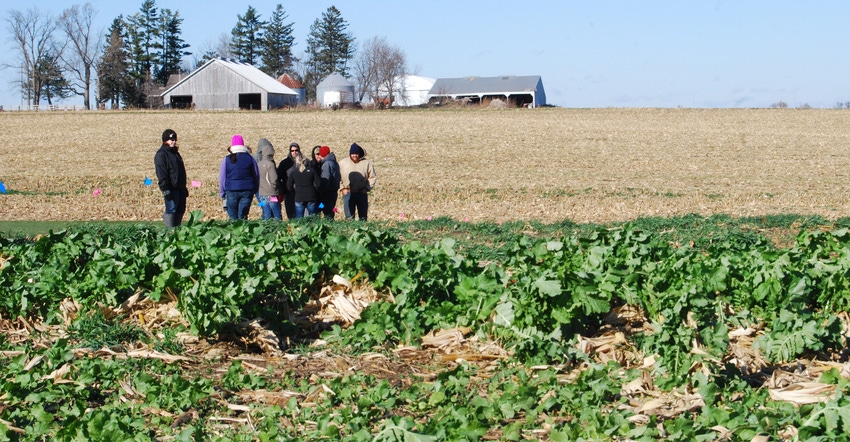
Interest in selling agricultural land is picking up among landowners in the Midwest, according to reports from farm real estate agents. The amount of land Farmers National Co. has listed for sale is up 21% compared to last year at this time, says Randy Dickhut, senior vice president of real estate operations at Farmers National.
“Most of the sales are coming from individuals or ownership groups who are deciding now is the time to sell,” he says. “They may have recently inherited the land or have owned it for years, but sellers have watched the land market, and some are deciding to take advantage of the still historically good land prices. Some sellers are thinking there is more downside risk in land prices than upside potential; so for them, now is the time to sell.”
Farmers National, based in Omaha, Neb., is the nation’s largest farm management services company and a leading farmland broker.
Slower land market
With the decline in commodity prices, especially corn and soybeans, the land market has slowed the past few years. But Farmers National had a 5% increase in farm real estate sales volume in 2018, Dickhut says.
Land buyers are generally more cautious right now, causing some land brokerages to experience more no-sale auctions, which don't achieve the reserve price during the public auction session.
Farmers National is seeing this happen occasionally, too. “But to us, these are just delayed sales,” Dickhut says. “The auction session may not have generated a bid above the reserve price, but our agents work diligently between the potential buyers and the seller to get the property sold, most of the time within hours or days.”
Continued trade war will affect ag
Speaking at the recent National Ag Bankers Conference in Omaha, Dickhut agreed with others on the program that the tariff war the U.S. is now engaging in with key foreign buyers of U.S. ag commodities will have long-term negative effects on agriculture if these disputes aren’t settled soon. However, he doesn’t see a repeat of the devastating mid-1980s farm financial crisis occurring in the foreseeable future. In the mid-1980s, land prices plummeted.
Today’s economic conditions are different than the 1980s, when farmers had more debt, they were highly leveraged, and interest rates were much higher than today. Another difference he sees now compared to the 1980s: There are plenty of successful, large-scale farmers today who are positioned to buy land from farmers who go out of business.
Others attending the Ag Bankers Conference agreed that the current economic situation in agriculture, although depressed by low commodity prices, is not being driven by the same circumstances as in the mid-1980s. However, farming can expect to see continued tough times ahead with low crop and livestock prices, and little or no profit margin, they said.
Tough winter ahead
“You’re in for a roller-coaster ride,” Purdue University economist Jason Henderson told the ag bankers meeting. “It’s going to be a tough winter. We are already seeing lower repayment rates for ag loans, and we are seeing an increase in the rate of loan applications being denied by ag lenders in the Midwest.”
Discussing the tariff situation and how it is hurting U.S. ag exports and commodity prices, Henderson, formerly vice president and Omaha branch executive at the Federal Reserve Bank of Kansas City, said, “The people formulating U.S. trade policy don’t understand agriculture.”
He agreed with the reason why President Donald Trump is using tariffs: to force the hand of China and other buyers who don’t play by the rules in conducting international trade. “But we must look at the effectiveness of imposing the tariffs and consider their side effects on our agriculture,” he added.
“China’s theft of intellectual property, for example, is a big problem. But the side effects of this U.S. tariff policy on our agriculture are real,” Henderson said. “China is unlikely to blink first in this trade war.”
Henderson is associate dean in Purdue’s Ag College and is director of Purdue Extension.
About the Author(s)
You May Also Like




